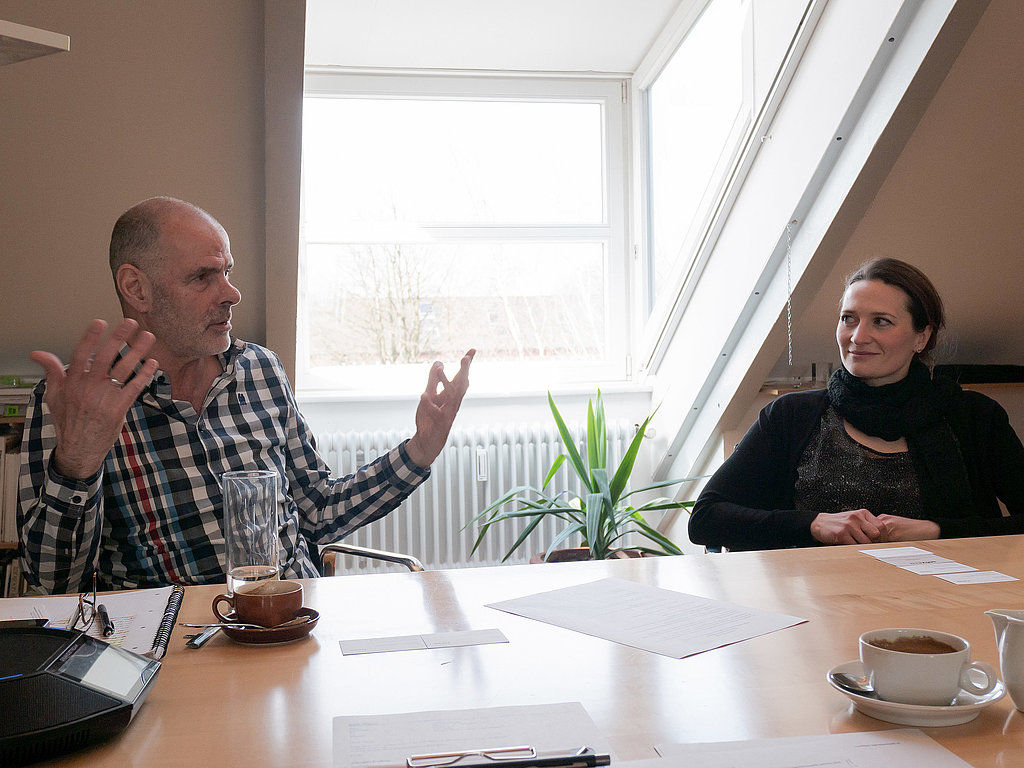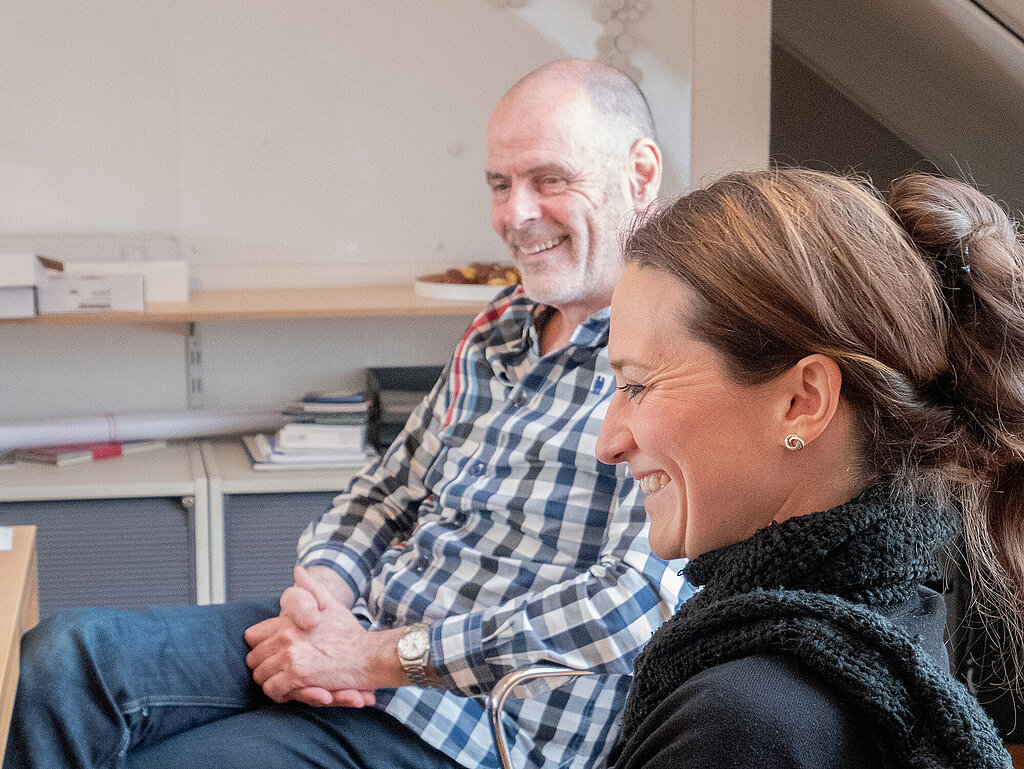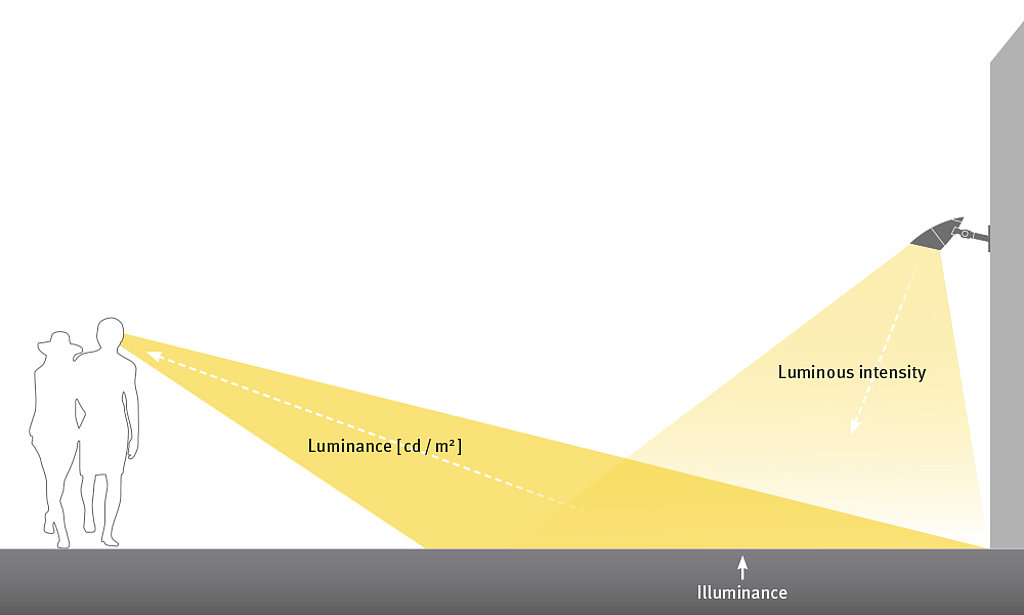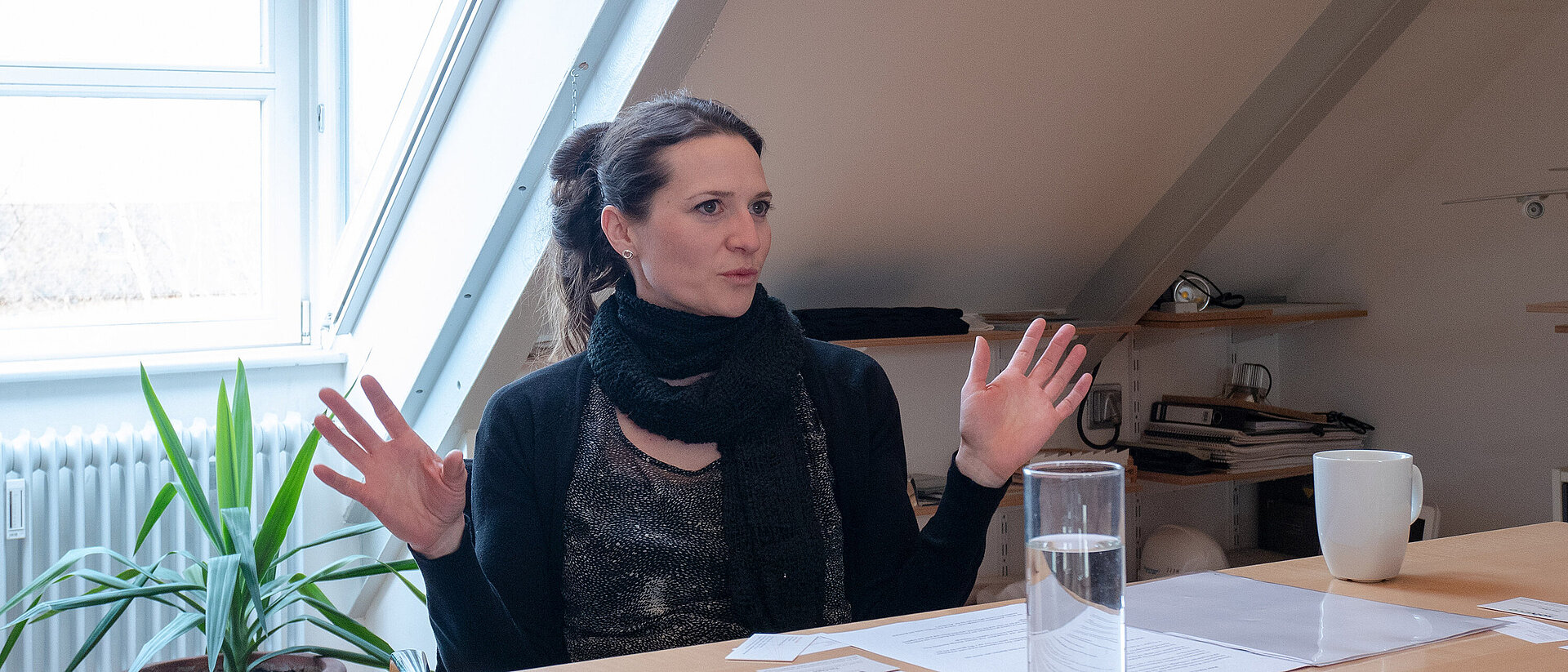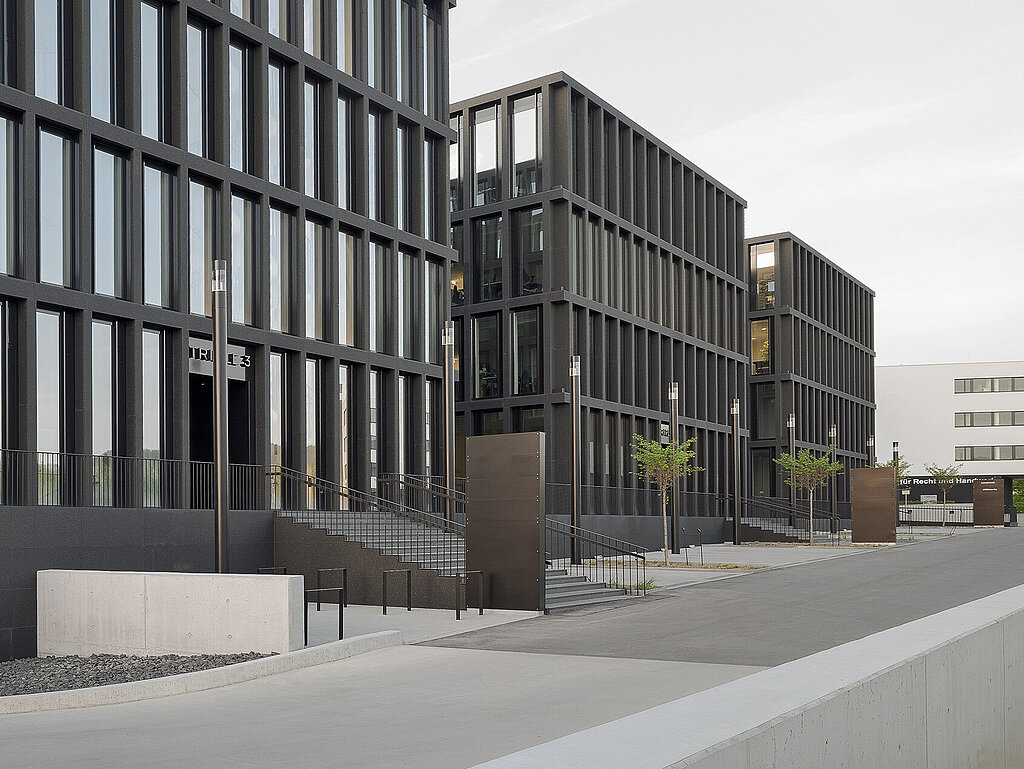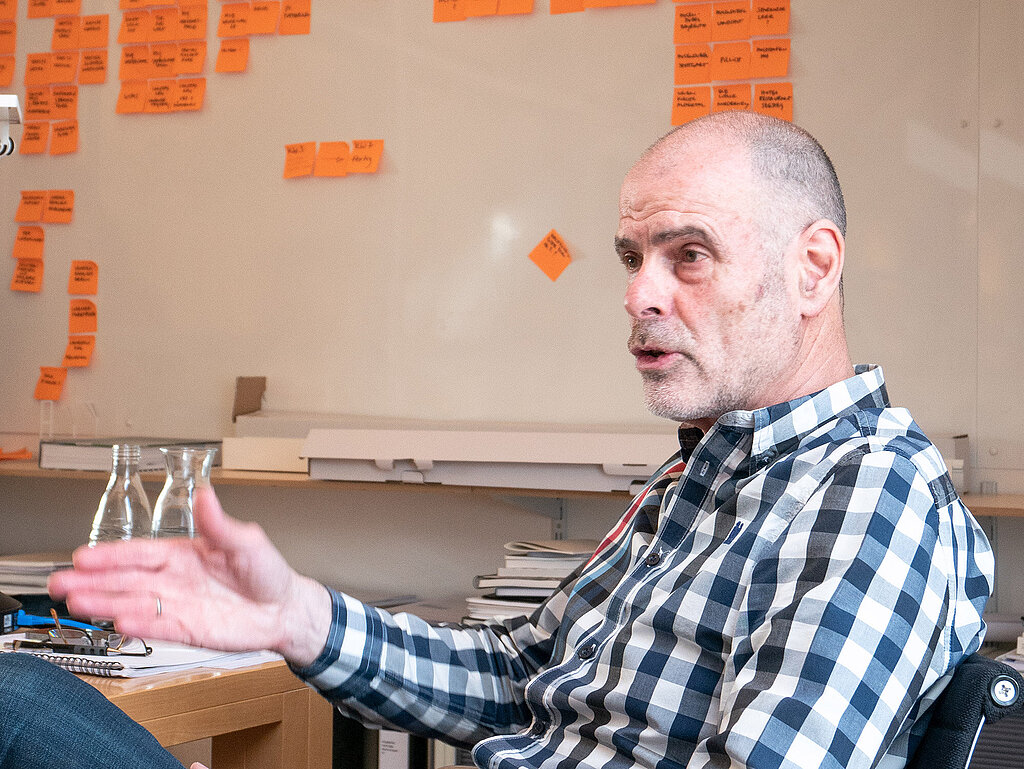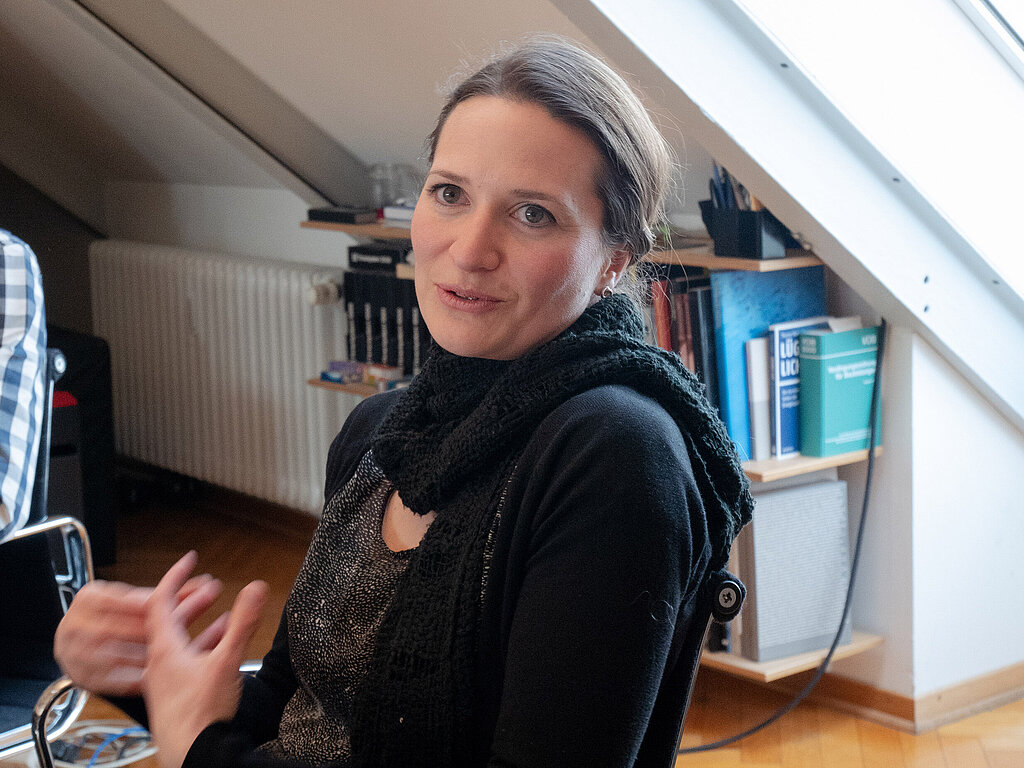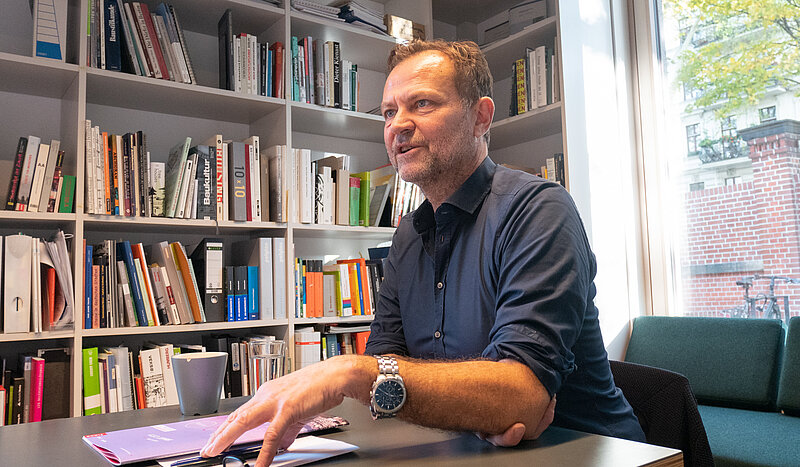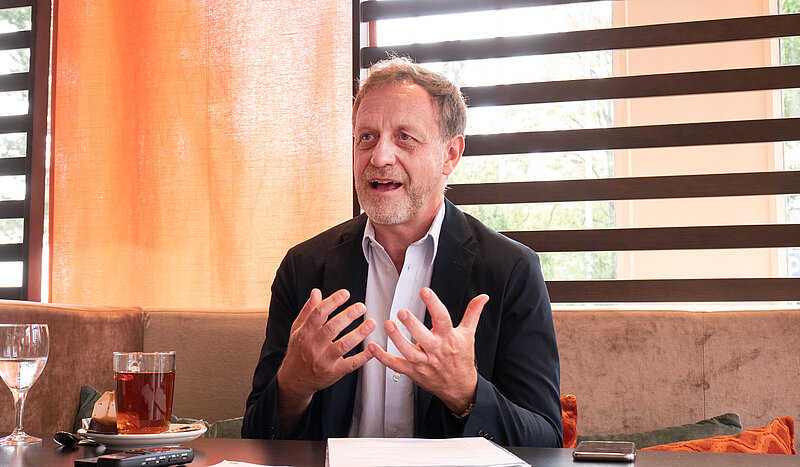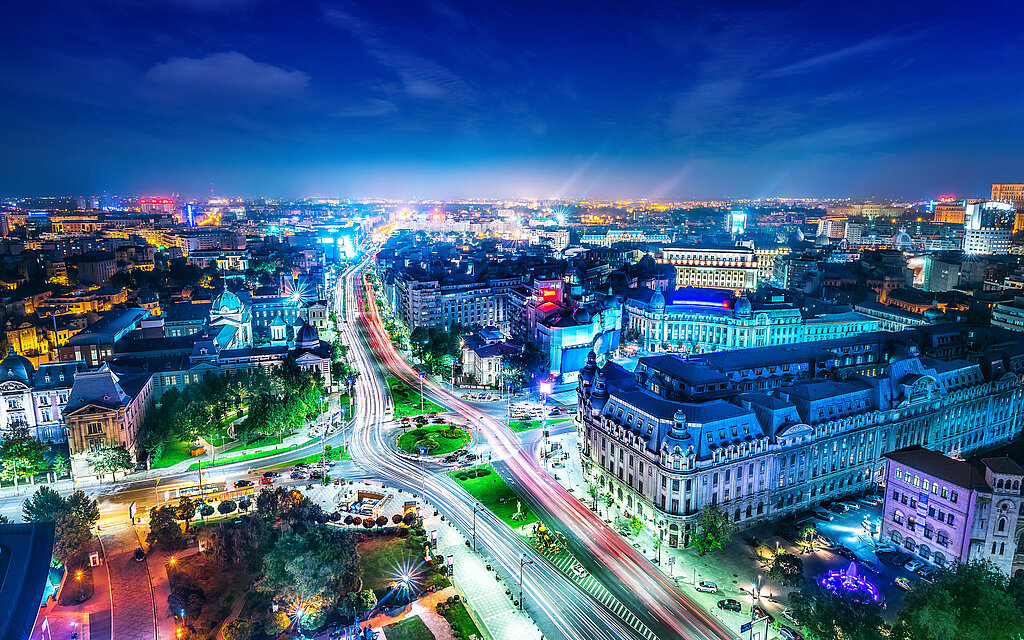
20.06.2018
Light in public spaces
In our new cover series “The Smart City of Today and Tomorrow”, we will be taking a closer look at this sustainable development using the example of public outdoor space.
What does “good light” mean for you?
Prof Andres: Good light means perceiving where we are going. We are veritably addicted to perceiving the spaces we live in. In addition to purely functional criteria such as good orientation and sufficient brightness, lighting must be tailored to our perceptions in order for this to be possible.
For example, it can be very uncomfortable if only the horizontal areas of a square are lit, making it impossible to discern the boundaries of the space. We as observers always want to be able to recognise spacial boundaries. If we don’t know where the space ends, where the borders are, it is unsettling for us. The perception of a room is significantly influenced by light and its distribution.
How does light need to be created and what kind of light do people need?
Prof Andres: For cultural reasons, we want to see warm light in the evening hours. By that I mean a quality of light that reminds us of incandescent light and firelight, because those are the qualities of light that have accompanied us throughout our entire evolution. This is a very important Point for us – it involves the very substance of light, the light that we feel.
Then the light situation also plays a role. Eyestrain must be kept to a minimum. If we are blinded by a bright spot in the evening, even the highest quality light wouldn’t make a difference, because we only perceive the glare. This is a particular challenge outdoors, because our eyes are especially sensitive in the evenings. We always work with less brightness and lower luminance.
When do people feel comfortable with light?
Schiebler: When they don’t even notice it. Light only becomes visible in combination with materials. In professional circles the conversation revolves around luminance, the measure for the impression of brightness. In principle, we try to discreetly blend all the luminosities that affect the eye so that we can perceive our surroundings optimally and not be blinded by glare.
Of course, knowledge about materials and their degree of reflection is a prerequisite for planning. For us, successful lighting design results mainly from the visibility of the surrounding space and its materials and less from the uncontrolled view of the light source.
Decisive on the one hand is people’s natural perception, and, on the other hand, the architecture and the surrounding area, which should appear attractive at night. Another important aspect is the environment. We want to achieve the goals we have defined for light in the most resource-efficient way, that is, with the lowest possible energy consumption and the least possible disturbance of the nocturnal sky. We also try to take into account the entire recycling process of a luminaire, from production to reclamation.
Speaking of luminance. What do you mean by that?
Prof. Andres: There is a lot of talk about lux. Lux is the best-known unit for illumination intensity and can be easily measured with a luxmeter. We cannot see illumination intensity but instead only the so-called luminance in candelas per square meter (cd/m²). The majority of the universe looks dark because although there is a high level of illumination intensity, there is hardly any material that can reflect the light to our eyes and thus produce luminance.
Ms Schiebler was just talking about it: Without knowing about the materials, we can’t make plans, because we can only see reflected light, and the measure for this is luminance. For example, if the Luxmeter displays 800 lux at one point and 800 lux at a different point, it would be quite possible to measure a luminance of 120 in the first position and a luminance of only 20 cd/m² in the second position – it is about perception of light.
That is why we think and work in luminance, because only it is really identifiable. And a feeling of harmony in a public space only occurs when we bring luminance into proper proportions. Everything that enters the eye should be in the right proportion. That’s the most important point. We want to set accents with light and illuminate a tree, a bench or a wall as a boundary. Here you can play with luminance splendidly and use the fact that in the evening hours in particular, we perceive things or objects which have only low luminance.
We determined this in our so-called “impact sampling”. For example, some time ago on Hamburg’s Elbe island “Kaltehofe”, a quiet, enchanted place. The results surprised us: For the perception of a dark brick wall, 0.6 cd/m² luminance was sufficient, although at this value, colour perception would actually be clearly limited. We were amazed at how much you can reduce the luminance when the eye is “left alone” and the luminances are in the right proportion to each other.
In regard to the catchphrase of “feeling comfortable”: “We make sure that people feel comfortable through light,” is your maxim. How do you approach that?
Prof. Andres: As we’ve already mentioned: the benchmark for us is human beings and their perceptions. That is at the core of all our considerations and the underlying tenet of what we do. Nature took about 500 million years to start evolution on land. The sense of light itself is much older. Natural types of light – skylight, sunlight and firelight – have shaped our sense of light and therefore form the basis of a sense of well-being from light in their substance.
“Functionality” and “harmony” are other important elements of your philosophy. How do you accommodate these considerations in your projects?
Schiebler: For us it is important that light evolves from the task. We look at what functions must be fulfilled before we define a lighting system. These are the requirements for which suitable lighting systems are already available – or not. If this is the case, we develop our own luminaires. In doing so, we make sure that the luminaire corresponds to our light criteria and is also easy to maintain and user-friendly.
The term “harmony” stands for our endeavour to harmonise the luminance, as already mentioned, so that a harmonious interplay is created between lighting and the environment.
Do developers approach you with specific suggestions or are you quite free in regard to your ideas?
Schiebler: Both. There are clients who know exactly how they would like their property to be illuminated. Here, the challenge mostly lies in implementation as desired and the corresponding lighting technology to be used, which in such cases is quite often a development on our part.
However, many more clients come to us with a specific project over which we are given free rein. In such cases we can rethink and redefine the representation of nocturnal space. Together with the architect, we develop a look and feel that either correlates with the daytime view or reverses it completely. Both are exciting tasks.
You put “architecture in the right light”. From our perspective it is a thoroughly emotional topic. How can you ensure “emotion”?
Schiebler: We put emphasis on a different kind of “wow-effect”. Less on colour or a lot of light, and more on elegance and harmony. We can clarify many details in advance with detailed discussions with customers. With light samples, we can see whether the elaborated lighting concept appeals to people.
That’s where we notice the initial reactions. In addition, we work with models to illustrate the proportions of the street lights in concrete terms. For example, this shows the ratio of the luminaire to space and people, where spotlights should be positioned and in which order, and what the luminaire looks like during the day.
The best moment, however, is seeing the finished project. If the client or the user on site simply feels comfortable, that’s exactly the emotion we want.
Prof Andres: Recently, we were together with the architect and the representative of the client at the acceptance of the “Triple” project in Heilbronn, Germany. His feedback: “That turned out beautifully”, and that’s the only outcome that matters. If the final result is good, everyone is satisfied.
The forecourt of the “Triple” building ensemble is illuminated by CITY ELEMENTS illuminating columns by Hess. Our Goal was to create a harmonious overall picture – and we managed to do that. It was a difficult journey to get that far. Now, upon completion, everyone is satisfied with the lighting concept, and that makes it all worthwhile.
Schiebler: This is a good example of where the building’s elegance is highlighted. At night it’s possible to look at the building without the interference of glare. The building stands out from its surroundings due to its high-quality lighting.
Prof Andres: The building contrasts pleasantly with the surrounding buildings with its appropriate overall effect. There is only one (warm) light colour. The interior lighting of the tenant-independent Areas has a controlled outward appearance and is coordinated with all components of the exterior lighting. Everything fits together here. You don’t have to be “noisy” to create quality and recognise quality.
Schiebler: This customer was not expecting the pleasant appearance of his building at night. Lights are often installed to perform a specific function. Thought is rarely given to what else happens with these luminaires within the environment.
How much persuasion is necessary to win over customers for a calm and restrained lighting concept?
Prof. Andres: They have to be convinced over and over again that sometimes considerably more effort must be expended to achieve an appropriate, often restrained effect. The art lies in the ability to convey a material that we can’t initially see. It certainly helps that we are virtually “infected” by good light. Light is simply inside us. That’s why we usually succeed in arousing this enthusiasm for light among our customers.
The beauty of our profession is that we can make a difference with light. If people are sensitised to certain details and effects, they also appreciate them – just like the adage, “we only see what we know”. That will always drive us and concern us.
The “smart city” trend and the resulting development concepts are becoming more and more popular. What is your opinion on this development?
Prof Andres: Mixed. Overall, this is a good approach with all the possibilities opened up by the Internet of Things. And humans have a tendency to do everything that is within their abilities. The positive thing is that citizens are involved in decision-making processes.
In the area of outdoor lighting, there is already a way to control light according to demand. This is a very sustainable and meaningful effect. Furthermore, I see potential in increasing light intensity, especially when older people want to make use of this option.
This is then followed by the next idea – we need to be networked in such a way that people are identifiable as such. To capture all this data, we need a wealth of sensors and information about the people who want to interact with the system. But what happens to the data we collect? Do we really want to pass on every detail, such as our location and length of stay, to third parties?
The smart city trend has created a great many new technical possibilities. Does this also increase our responsibility to handle them properly? Although I’m a fan of technology, I have reservations here. Managing these options responsibly, carefully and critically will be crucial to their use. We do everything for people, not just for Industry 4.0, the IoT, and so on. Our standard is and remains the human being. Reasonably and appropriately handling all these new opportunities is a huge challenge that we have the utmost respect for, one that we couldn’t escape from even if we wanted to.
Our job is to educate our customers about all of these possibilities, especially technical ones, and to develop our recommendations so conscientiously and comprehensively that they are able to make sound decisions.
What are the particular challenges for lighting and lighting design in smart urban environments?
Prof Andres: Light is generally used much more efficiently. It makes sense not to fully illuminate a road between two localities unless it is being used. Lighting systems can be put in place to provide this quality and intensity of light when it is needed and to minimise output when it isn’t needed.
We are currently working on the Allerpark project in Wolfsburg, a nature reserve. In this area there are walking and skating trails that are to be illuminated. At the same time, animals that are very sensitive to light are living there. In order to meet all requirements, a balance must be found between nature conservation and sufficient spatial perception.
Smart technologies offer great options for this. When no one is out in the evening, a low level of basic illumination is sufficient, but the intensity will temporarily increase when movement is detected.
When designing lighting systems, we are almost radical in terms of their efficiency. If we can find a way to increase the Efficiency of a luminaire from 80 per cent to 82 per cent, then we stop at nothing to do this so that resources can be conserved.
What is your position on glare suppression?
Schiebler: This is an elementary topic for us. We are frustrated every time we fly back to Hamburg and see how much light is being emitted into the night sky. Regardless of the possibilities of lighting control in smart cities, it is important to consider first of all what can be saved with glare suppression. The energy that goes upwards wouldn’t have to be invested in the first place.
Prof Andres: Every quantity of light that shines into the sky, often as scattered light, disturbs the bird and insect world and ultimately us as well. And we know that since the development of the LED, more energy than ever before has gone into lighting, no matter how economical this source of light is. This is partly due to the fact that today there are more options for illuminating outdoor areas.
In addition, the night design of a city is playing an increasingly important role. People don’t like walking through dark cities at night. The night design also influences quality of life, and working rhythms are also changing. Those leaving the office at 10 pm don’t want to walk along dark streets. In this case, the right outdoor illumination concepts provide a wonderful opportunity to make nocturnal spaces appealing.
For us, good design does not mean placing light sources in a space point by point but instead making everything blend discreetly. That makes it fun to stroll through the city in the evening and experience a properly illuminated Wilhelminian façade alongside a modern, “glowing” facade, for example.
How would you describe a smart luminaire from your point of view?
Prof Andres: A system that is intelligent but does not interfere with personal rights. For example, I am thinking of a luminaire that automatically raises the intensity of illumination on a staircase when there is a higher frequency of visitors and dims it back down for one individual, who requires less light. This also has something to do with safety aspects. And if no one is present, the light could be reduced to what is necessary for pure perception of space.
To our knowledge, the DIN recommendations don’t even touch on this. A level of lighting is required for a particular location, regardless of whether one or a hundred people are at that location. Also interesting are systems that combine functional lighting and building illumination, in which one component is to react with a different level of “intelligence” than the other.
It would make sense to assign individual intelligences to the individual functions. In this way you could use different options wisely.
Do you also advise your customers regarding the integration of additional functions into a luminaire?
Prof Andres: Yes. We are currently working on a project in Southern Germany where the integration of additional functions in the lighting structure is required to create a “tidy” outdoor space. It is important that everything gives the impression of a uniform whole in the end. The customer can expect us to also look beyond our field of expertise.
What role does the design and thus the daylight effect of a luminaire play for you?
Schiebler: The design is a very high priority. Initially, of course, it is important to define the lighting task. Then the lighting technology, together with the design, moves forward into a development process with various experiments and models.
This is where my industrial designer juices start flowing, because function, form and technology have to be brought into harmony. Irrespective of the light, we have a very high standard of design. Building the bridge between design, good lighting and lighting technology as a prerequisite for good light is the real challenge.
You sometimes design outdoor luminaires yourself when existing models are less suitable for a project. How do you tackle this task?
Prof Andres: With us, the customer gets the perk of a tailor-made and optimal lighting solution for their building or exterior space. The important thing is the effect and the goal. Either there is already an existing system, or we are in a position to develop one. We design on the basis of the function, meaning that we think about where the light should reach. At the same time, we consider the light substance, which is crucial to a sense of well-being. Then we condense all the criteria into a so-called “net luminaire”. The next step is to create a design that includes all the essential components and functions.
In principle, every construction assignment is different. Even an identical plaza in another environment looks like another plaza. It also makes a difference whether we are overseeing a project in Cairo, Egypt, in Addis Ababa, Ethiopia, or in Heilbronn, Germany. That’s why we’ve never encountered a case of repeating the same task. In the end the goal is ultimately making people feel comfortable and discreetly blending the overall picture.
Peter Andres
In addition to his work as a lighting designer, Peter Andres has been a sought-after expert in teaching and research since the mid-1990s. From 1994 to 2002, he was a lecturer for lighting design at the Faculty of Architecture of the University of Applied Sciences Hamburg, and from 2003 to 2006, he served as Deputy Professor for Lighting Design at the PBSA Peter Behrens School of Architecture in Düsseldorf.
Since 2006, Peter Andres has been an honorary Professor for lighting design at the PBSA Peter Behrens School of Architecture in Düsseldorf and spokesman for the Light Advisory Council of the Free and Hanseatic City of Hamburg. The committee advises the Senate for Construction, Urban Development and the Environment with the aim of further developing the nighttime cityscape.
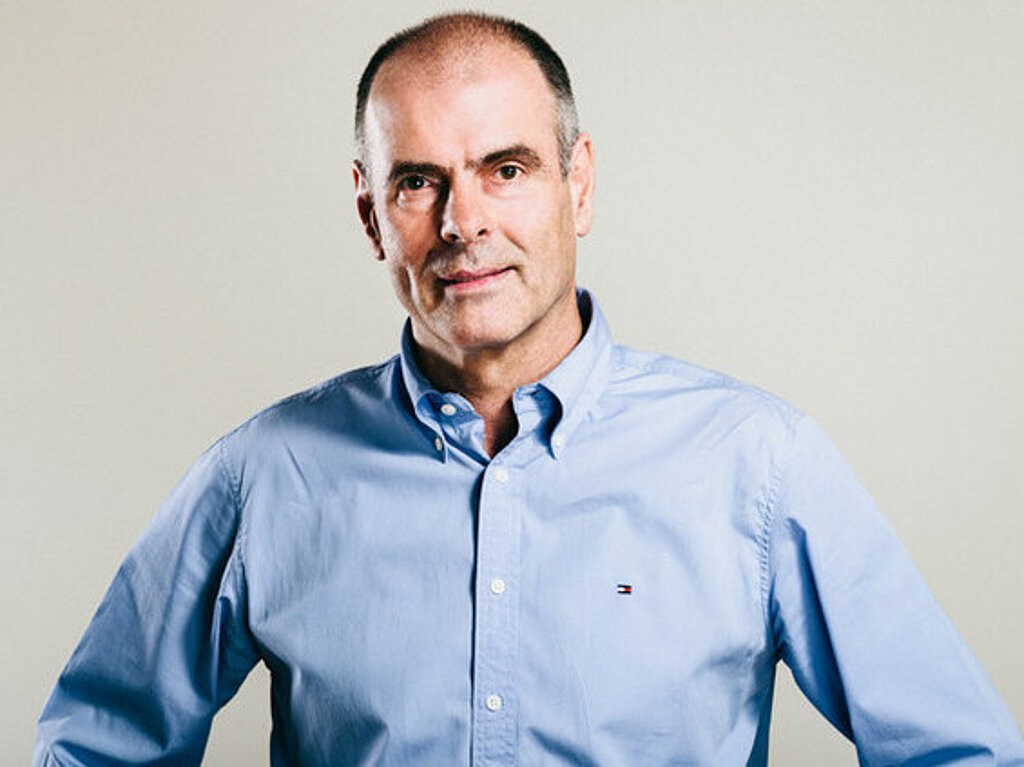
Katja Schiebler
The graduate designer of architectural lighting has been a member of staff since 2008 and an associate of the Hamburg firm since 2014. From 2005 to 2008, immediately after completing her studies in the USA, Ms. Schiebler gained extensive experience as a product designer at a large car manufacturer in Germany. She is in charge of designing new lighting systems that are developed to meet specific requirements.
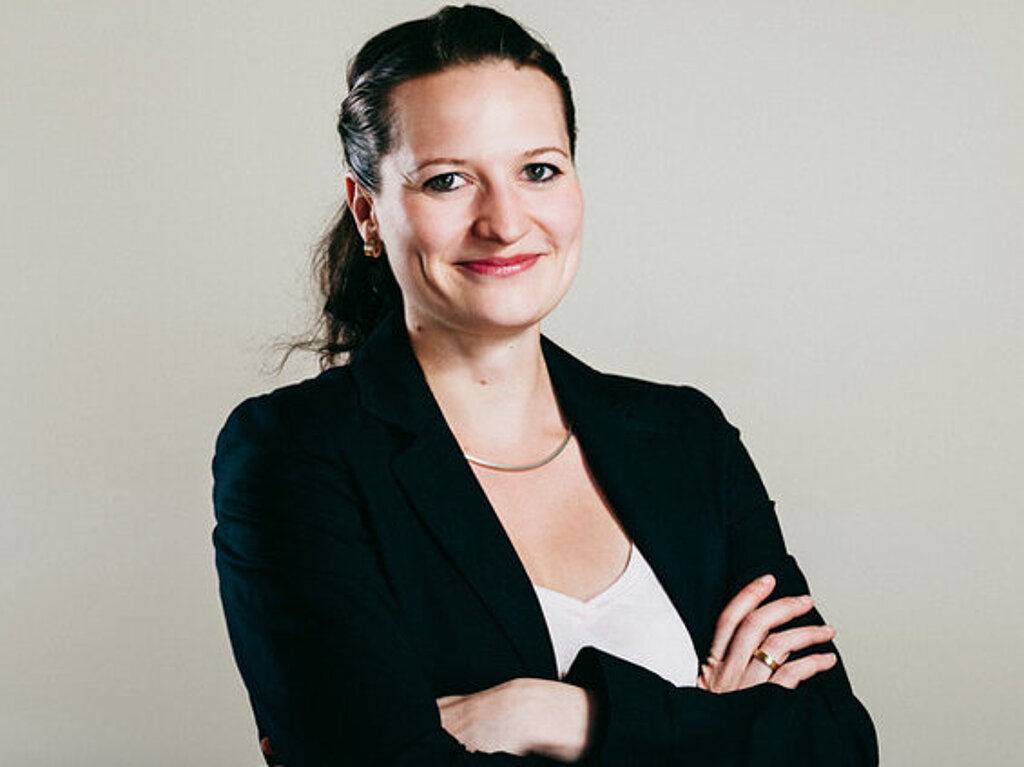
Peter Andres, Consulting Engineers for Lighting Design
The renowned and multiple award-winning Peter Andres lighting design consultancy was founded on January 1, 1986, by Prof Peter Andres in Hamburg. Since January 2000 there has been an additional branch office in Tyrol, where Peter Andres has his roots. The Hamburg office comprises a team of 10 specialists from the areas of lighting design, electrical engineering, model construction, design of lighting and architectural lighting, architecture and interior design.
The focus of the firm’s work is on demanding daylight and artificial lighting planning for public and private projects in the areas of culture, administration, industry, retail, sports and outdoor facilities, as well as development of lighting systems to meet project-specific requirements.
A special feature of the firm’s planning is its modelsupported working method under what is known as an “artificial sky” – a translucent dome illuminated by more than 1000 fluorescent lamps, representing the diffuse light of the vaulted sky. An artificial sun and a revolving platform integrated into the floor enable automatically controlled simulation of the path of the sun at any location on earth. As a result, the planned lighting effect for a project can be illustrated and perceived far in advance of the actual implementation.
http://www.andres-lichtplanung.de/
Awards
2018: German Lighting Design Award 2018, Award Winner Category “Outdoor Lighting / Lighting”
2016: German Lighting Design Award 2016, “Lighting Designer of the Year” Laureate, Category “Private Projects”, Laureate “Balthasar Neumann Prize” Laureate for the Project “Propsteikirche in Leipzig, Germany”
2013: German Lighting Design Award 2013, “Education” Category Laureate
2012: German Lighting Design Award 2012, “Lighting Designer of the Year”, “Jury Prize Daylight” Laureate, “Education” Category Laureate
2003: hamburgerdesignpreis 2003 (with ON-Industriedesign)
2002: Winner of the European Design Competition “Lights of the Future” (with ON-Industriedesign)
1994: “Balthasar Neumann Prize” Laureate for the Project “Hamburg Airport – Terminal 4”

